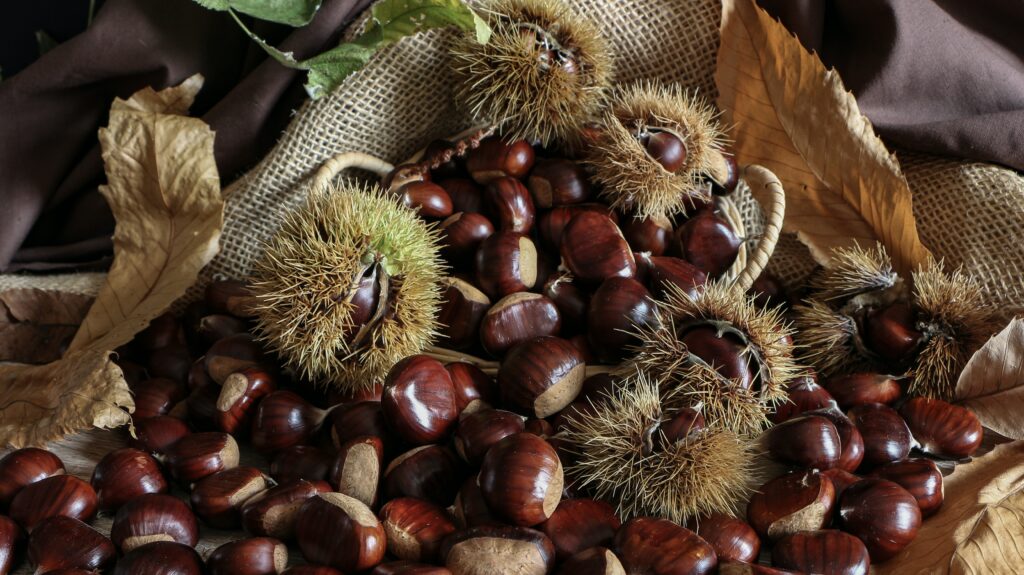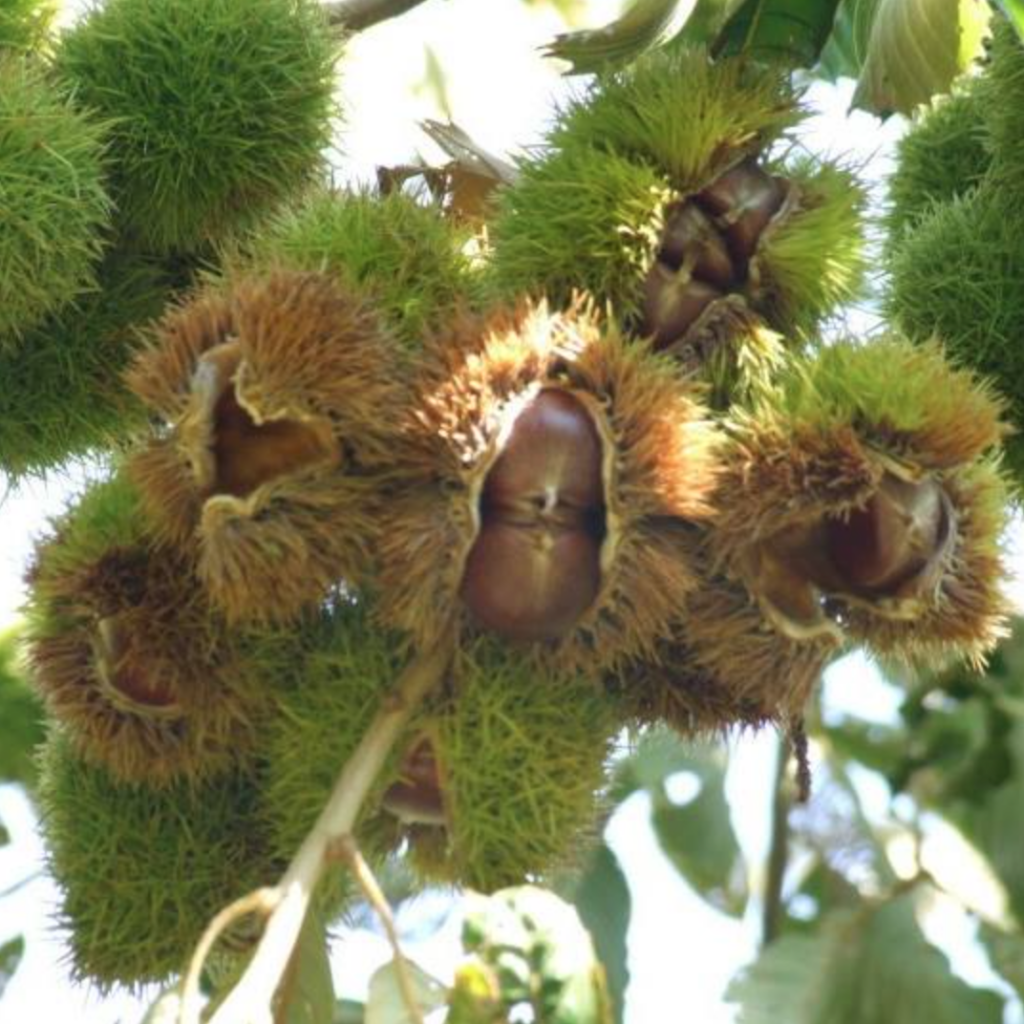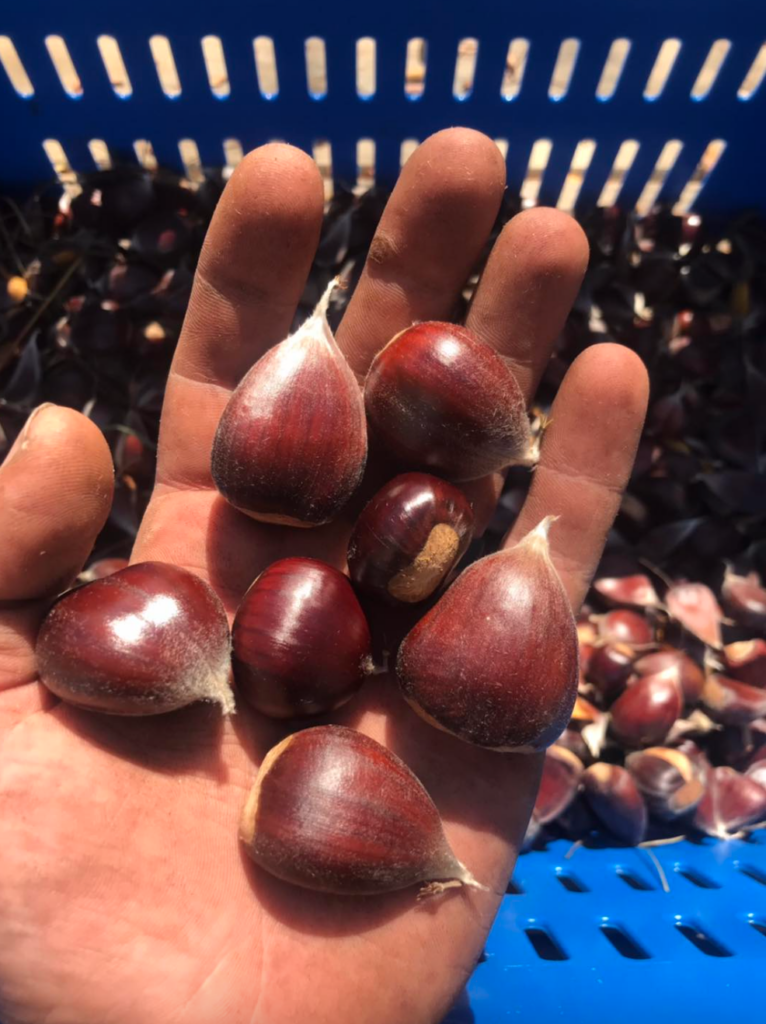The American chestnut was a reliable source of lumber for building, and food for animals and humans, for many years. But after being wiped out across the country by a fungal blight in the early 1900s, we lost over 3 billion trees by the 1930s.
Growers seeking to bring chestnuts back to Michigan sought out European and Chinese varieties which are both known for being more resistant to chestnut blight. Through experimentation and trials of hybrid varieties, there are now several chestnut varieties that grow well in Michigan and are most likely the type you’ve come across at farmers’ markets or grocery stores.
MSU Extension has played an integral role in supporting chestnut production in our state. Not only do they provide a lot of educational resources for chestnut growers, but they also maintain the only commercial chestnut peeling line in the Western Hemisphere.
Based on 2013 data, Michigan is the number one producer of chestnuts in the United States. And with demand exceeding current production, there is a lot of opportunity for people interested in growing chestnuts.

What Is A Chestnut?
A chestnut is unique in that it is actually a fruit and not a seed, like most other nuts. It grows in a cluster of up to 7 nuts inside a spiky husk, which causes the nuts to be rounded on the bottom with flat sides, similar to a garlic clove.
Chestnuts are known for their mildly sweet, nutty, buttery flavor. An incredibly versatile food, it can be boiled, roasted (cue your favorite Christmas song!), steamed, deep fried, or dried and turned into flour for baking, making polenta, or crafting your own pasta. Recipes using chestnuts range from stuffing to stew to cakes and pies to mashed with butter like potatoes. The options are endless for making use of this sweet nut.
Known as “the grain that grows on trees,” chestnuts are incredibly healthy. They are lower in calories and have a much lower fat content than all other nuts. It’s a great source of fiber and makes for a great gluten-free flour alternative.
Michigan Chestnut Farms
Michigan chestnuts are in season from October to December but can be peeled and frozen or dehydrated to last throughout the year. Unlike most other tree crops, they are gathered from the ground after falling naturally, rather than harvested off the branches.
Use our Find Food & Farms database to find chestnuts near you! Some of our partnered producers include:
Bakker’s Acres in Suttons Bay
This family-run farm sells Chestnuts at farmers’ markets all over the Traverse City/Leelanau Peninsula Area.
Crooked Pine Farm in Montrose
Sign up for their farm share to get your hands on their chestnuts.
Harveys‘ Farm in Tekonsha
Schedule a U-Pick day early! This popular grower sold out of chestnuts in mid-October in 2023!
Nash Nurseries in Owosso
Pre-picked or pick-your-own fresh chestnuts are available in season! Or try some chestnut chips or chestnut flour at any time throughout the year. You can even purchase your very own chestnut tree and have your own supply each season.


How To Open A Chestnut
While many nuts have a hardy shell that can be tough to crack, chestnuts are encased in a spiky but malleable outer shell. And unless you pick your own, you’re unlikely to even see it!
The tricky part of preparing chestnuts is actually the removal of the skins. Most recipes recommend scoring the chestnuts before cooking for two reasons:
- Chestnuts swell as they cook, and can become too pressurized in the skins and burst.
- It makes removing the skins much easier.
Score an ‘X’ on the flat side of the nut with a sharp knife. Keep the chestnuts warm as you remove the skins–letting them cool will make the skins reattach to the nut. But don’t worry if that happens – just rewarm the chestnuts and continue skin removal.
Head over to our guide on Chestnut Flour to make use of your shelled chestnuts!
Have you eaten Michigan chestnuts? Be sure to include the #tastethelocaldifference with your local finds!
Carrie Hause is the Digital Media Specialist for Taste the Local Difference. Contact her at [email protected].
